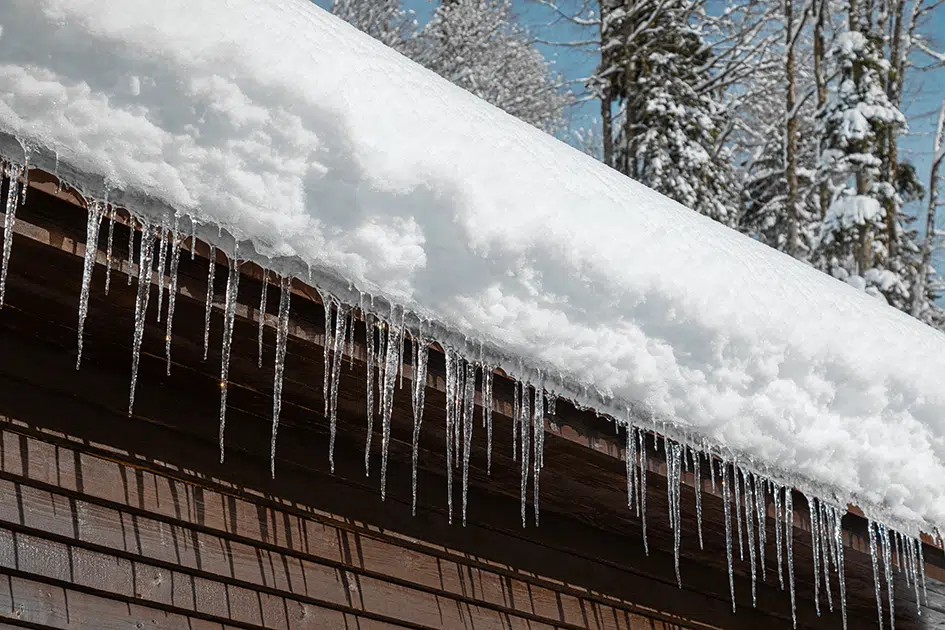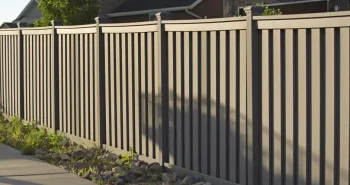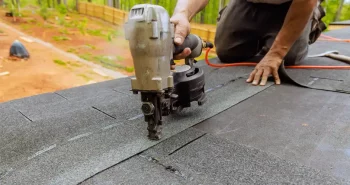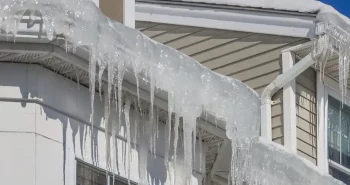Winter weather can be beautiful and marks the turn of many people’s favorite season. It means the holidays are near, which usually equals more time for friends and family. While getting cozy in front of a fireplace is a great way to keep warm indoors, it’s your home’s exterior that helps maintain comfortable temperatures. Your home’s siding and roofing system are the first line of defense from cold, harsh weather, but over time they experience a lot of stress. The roofing system in particular is subjected to a lot of wear and tear, especially if you live in regions that experience harsh winters. When not properly cared for, snow and ice can have a significant impact on your roof’s longevity and appearance. To help you better understand what to expect as the temperatures continue to drop, here’s everything you need to know about the impact of snow and ice on your home’s roofing system.
5 Ways Snow and Ice Can Affect Your Roof
Roofing systems are built to withstand extreme weather, but even one winter season can have a lasting effect on durability and longevity. Newer roofs tend to fare better against things like snow and ice, but older homes may require repairs or even replacements following a particularly harsh winter. To help you stay proactive about any damage, consider the following ways snow and ice can affect your roof.
1. Freeze/Thaw Cycles
This is a common term that’s discussed throughout winter, as it can affect several structures from the driveway to the roof. The freeze/thaw cycle is used to describe the changes that occur from daytime temperatures and sunlight to sub-zero temperatures that may occur at nightfall. During the day, temperatures tend to warm up and may cause a portion of the snow on your roof to melt. This creates water that can seep into small nooks and crannies along your roof.
When nighttime temperatures drop back to freezing levels, the melted snow refreezes, causing it to expand again. This results in further issues with any impurities like cracks or holes in the roofing structure. As this cycle continues, the cracks get bigger and bigger, which can eventually result in water leaks in your home. Since this can be difficult to notice when there’s snow atop the roof, it’s important to keep an eye on your attic and check for any signs of water damage. The sooner the cracks are repaired, the less likely they are to cause damage.
2. Ice Dam Formation
One of the most common, yet dangerous, problems that snow and ice can create is ice dams. Ice dams can form due to the freeze/thaw cycle, but rather than creaking cracks, they freeze over in a sheet that blocks the gutters. The warmed water that melts on the roof slowly drips down to the ridges along your roof’s perimeter, then refreeze at night. Signs of ice dams may be blocked gutters or visibly present icicles. Therefore, although they may seem like a nice, natural holiday decoration, icicles should be addressed as soon as possible to prevent further issues.
Aside from the freeze/thaw cycle, some things that can cause ice dams include inadequate attic ventilation and flat-pitched roofs. When the attic insulation isn’t sufficient for your home, too much warm air can escape and heat the under layers of snow or ice. This can cause the lower layers to melt and run down the pitch of the roof to the ridge. Since the roof edge isn’t directly heated by the attic, the water will refreeze and cause blockages. Flat-pitched roofs also have a higher risk of ice dams as the water isn’t able to drain off as quickly, which can lead to more accumulation around the edge.
When not addressed early, ice dams continue to accumulate and build up. Since no water can escape, the cycle continues and can lead to roofing damage or increased weight on your roof. Ice dams can also cause water damage and lead to several structural issues with your home’s roofing system.
3. Snow and Ice Buildup
Although picturesque, snow should not accumulate indefinitely on your roof. Following a heavy storm, it’s important to remove the buildup in the correct manner. Snow can be extremely heavy, especially if temperatures are higher or humidity is present. In fact, when the snow is compacted or wet, it can weigh up to twenty pounds per cubic foot. For comparison, light or fluffy snow only weighs about seven pounds per cubic foot. When ice is involved, the pressure put on your roof gets even higher.
This weight can put excessive strain on your home’s roofing system, which the load-bearing capabilities may not be able to handle. Depending on the amount of snow and the quality of your system, this could even cause the roof to cave in. Every roof has a different load-bearing capacity depending on the materials, age, and condition in general, but you should never let snow or ice buildup too much. As a rule of thumb, schedule removal immediately if snow reaches about three feet or if you notice two inches or more of ice. Anything over these measurements will likely cause problems with the structural stability of your roofing system and could result in dangerous situations.
4. Damage from Snow Removal
When the snow or ice gets to be too high, it’s important to have it removed. However, the method you use for snow and/or ice removal is just as important. While it is possible to try and remove on your own, doing so may lead to further damage to your shingles or your roof’s protective membrane. If you’re not sure what tools to use or how to angle them, it can cause chips or punctures, which will lead to further problems throughout the winter. Plus, getting on your roof when ice is present is never recommended as it can be extremely dangerous and lead to serious bodily harm. Instead, work with a professional roofing contractor for your snow and ice removal this winter.
5. Leaks and Water Damage
Regardless of how snow and ice impact your roof, damage will usually result in leaks within your home. Although water damage is usually tied to rainy seasons or problems with the plumbing, they can actually occur more often in winter. Homeowners don’t tend to suspect leaks to occur, which can result in a decreased diligence of looking for warning signs.
To make sure that issues are addressed as soon as possible, regularly inspect your attic and keep an eye on your walls and ceiling for any signs of pooling or mold growth. Although these can be frustrating, leaks during the winter tend to indicate structural damage that should be repaired as soon as possible to avoid potentially catastrophic situations.
How to Prevent Damage from Snow and Ice
Each roofing material is affected by snow and ice differently. Metal roofs are some of the best options to reduce the risk of ice dams and negate the effects of the freeze/thaw cycles, while asphalt roofs may be more susceptible to damage if not well maintained. However, regardless of the type of roof you have, the best way to prevent damage from snow and ice is to undergo regular roof inspections and take care of any repairs as soon as possible. This may only involve replacing a few shingles or resecuring your flashing, but it could also mean undergoing a full replacement if your roof is old or in bad condition. Working with a reputable roofing contractor will provide you with everything you need to know about caring for your home throughout the year.
If you suspect that your roof has been damaged by snow or ice, contact the professionals at First Star Exteriors. We offer roofing and siding inspections to help you feel confident that your home is in good condition, regardless of the season. If anything needs repairing or replacing, we provide competitive rates with full transparency. At First Star Exteriors, we’re dedicated to providing high quality work with 100% transparency. If you’re looking for an expert roofing company that you can trust, look no further than First Star Exteriors. With our extensive experience, we aim to help you with all of your roofing and siding needs. We offer fast turnarounds for quotes and services to make sure your needs are addressed in a timely manner. Contact us today and receive a free quote within 48 hours!





